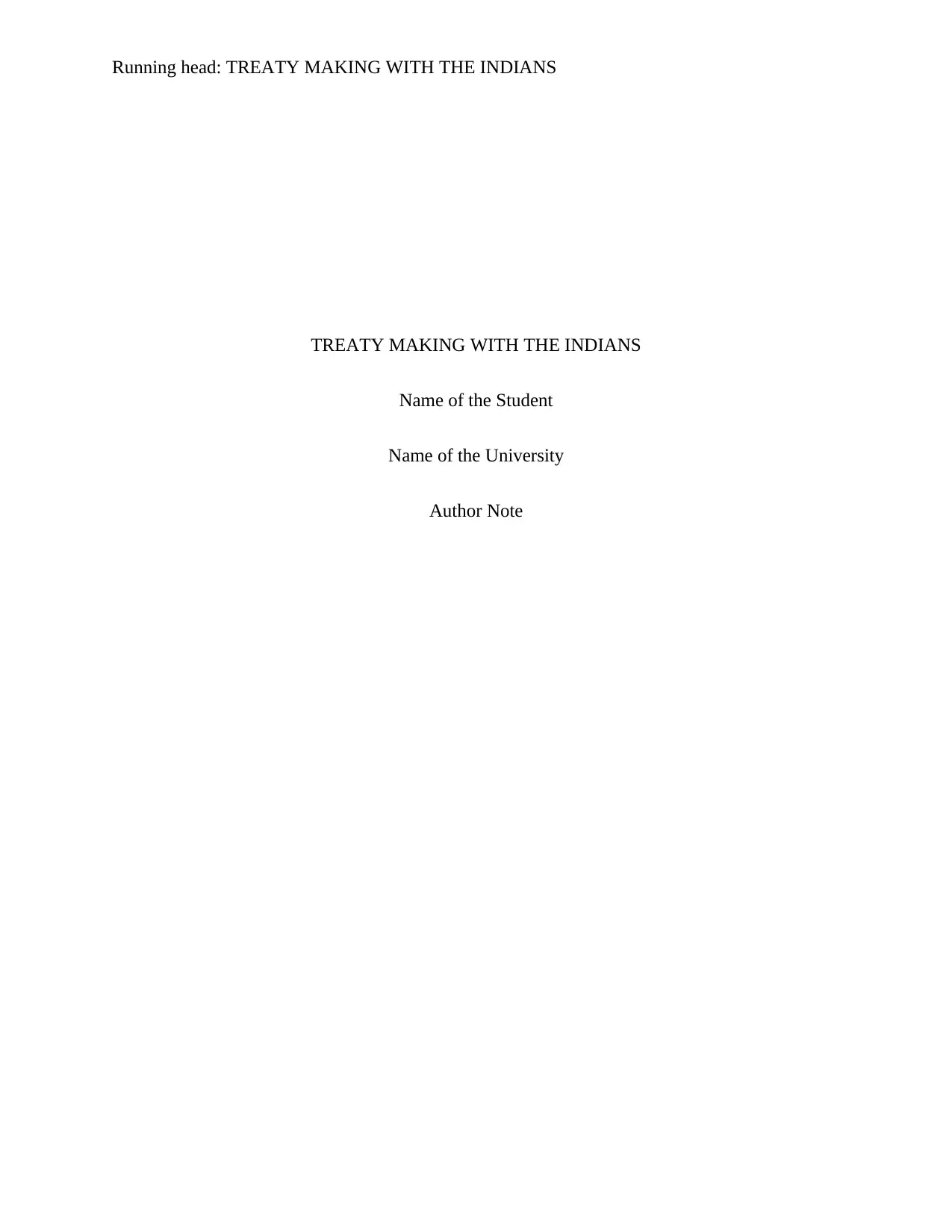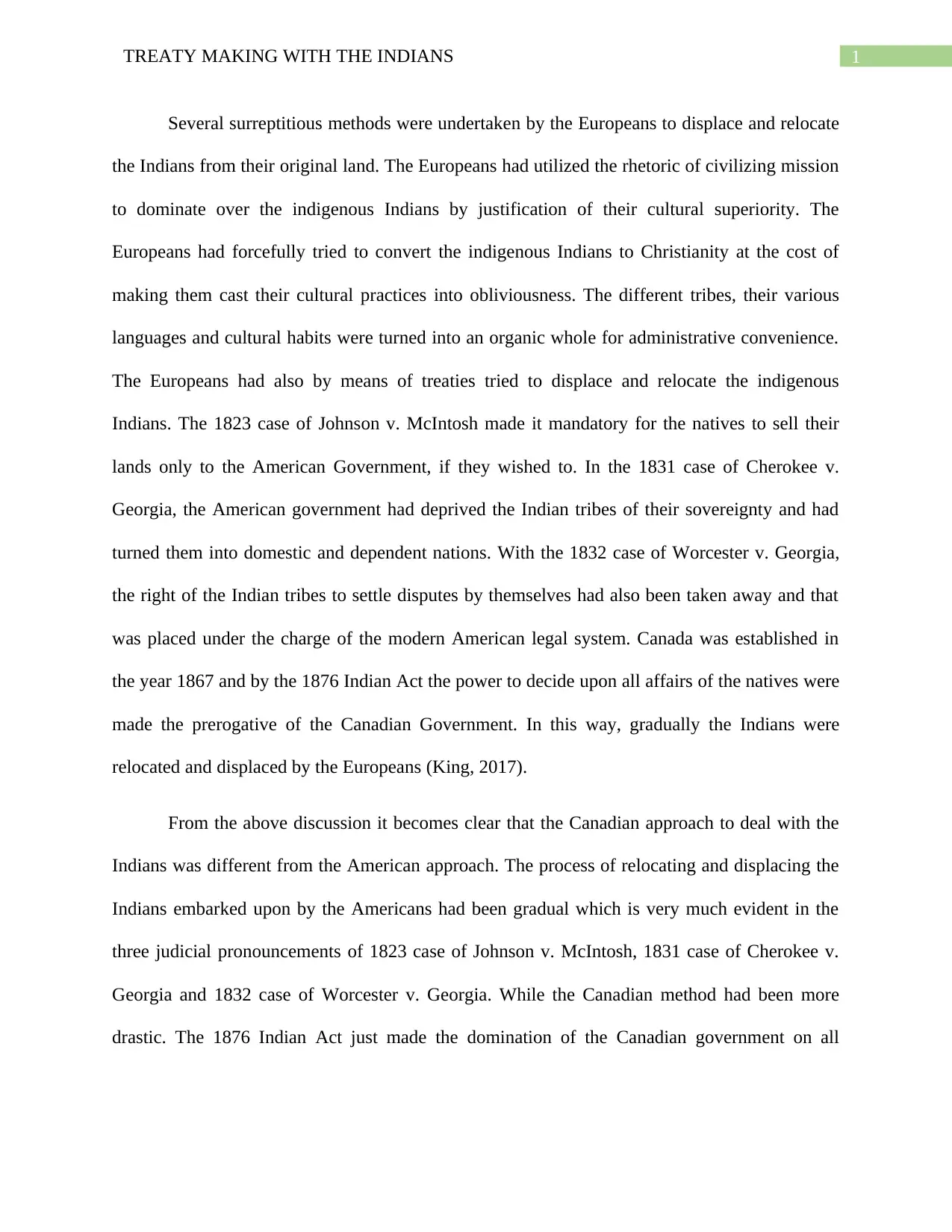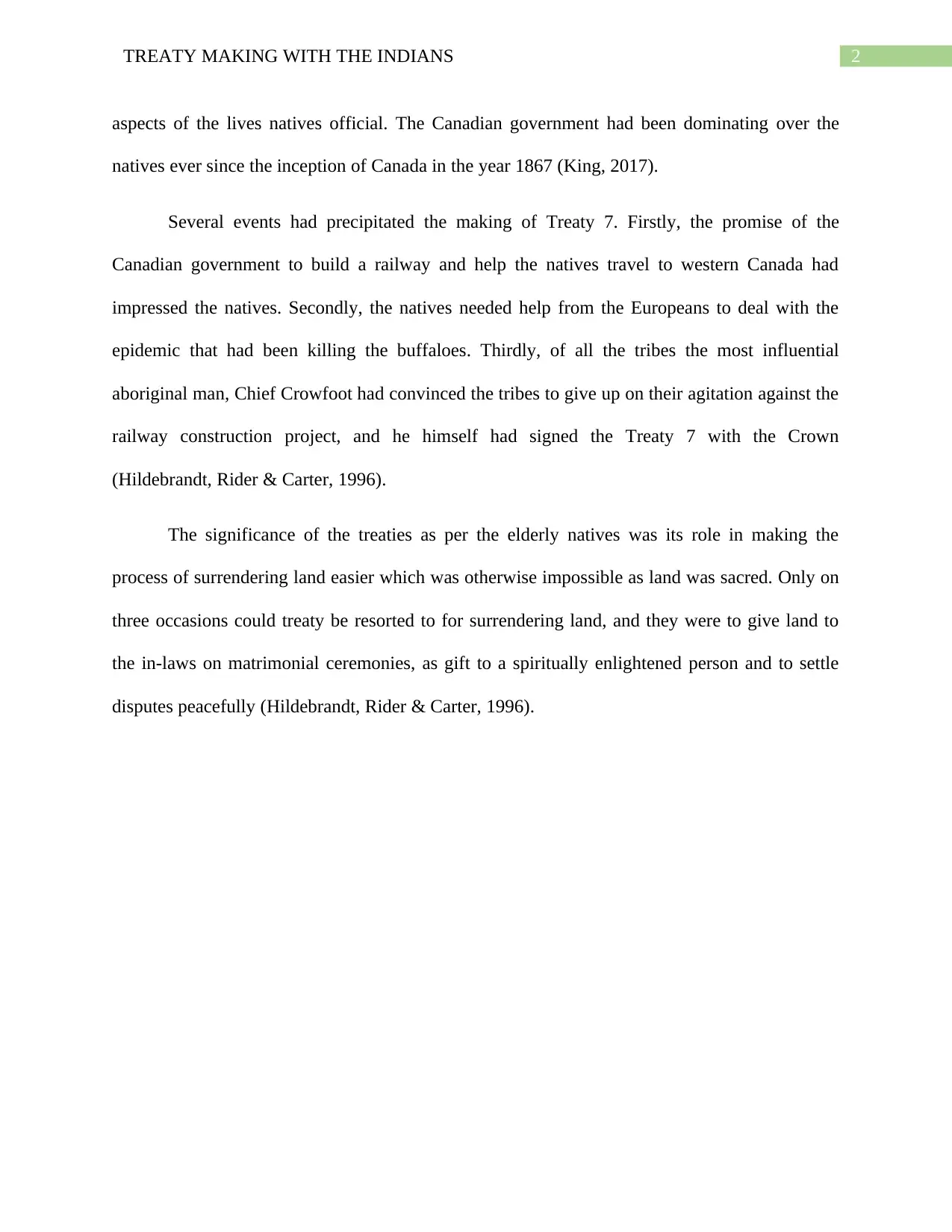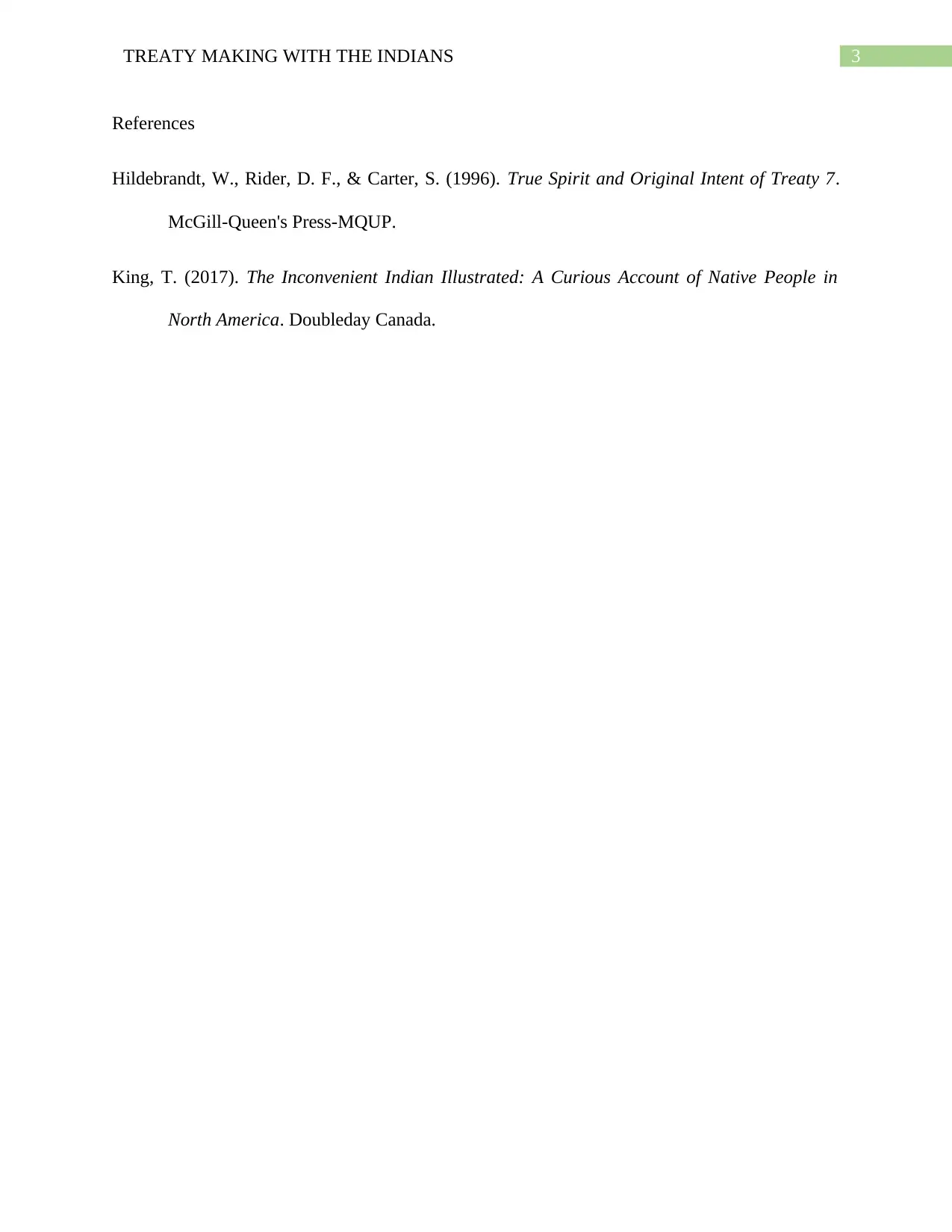A Comparative Study: Treaty Making with the Indians and Relocation
VerifiedAdded on 2023/04/22
|4
|660
|63
Essay
AI Summary
This essay examines the history of treaty making with the Indians, focusing on the displacement and relocation of indigenous populations by Europeans in both the United States and Canada. It highlights the contrasting approaches taken by the two countries, noting the gradual process in America through judicial pronouncements like Johnson v. McIntosh (1823), Cherokee v. Georgia (1831), and Worcester v. Georgia (1832), versus the more drastic approach in Canada with the 1876 Indian Act. The essay also delves into the events leading to Treaty 7, including the promise of railway construction, the need for assistance with buffalo epidemics, and the influence of Chief Crowfoot. It emphasizes the significance of treaties from the perspective of elderly natives, who viewed them as a means to facilitate land surrender in specific circumstances, such as matrimonial ceremonies, gifts to spiritually enlightened individuals, and peaceful dispute resolution.
1 out of 4






![[object Object]](/_next/static/media/star-bottom.7253800d.svg)